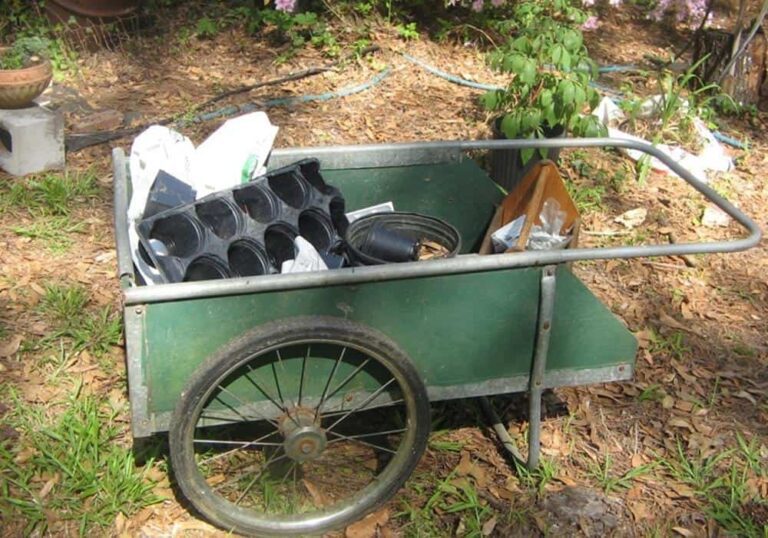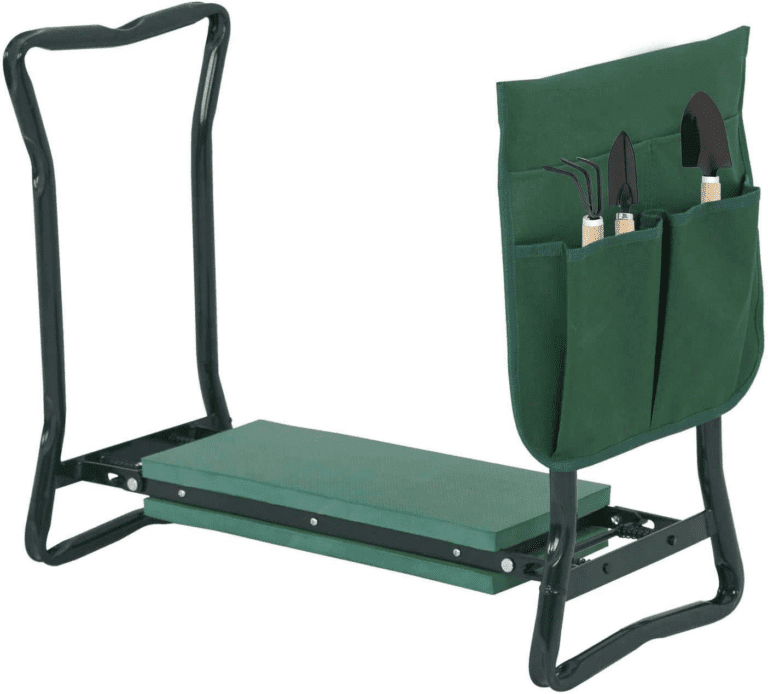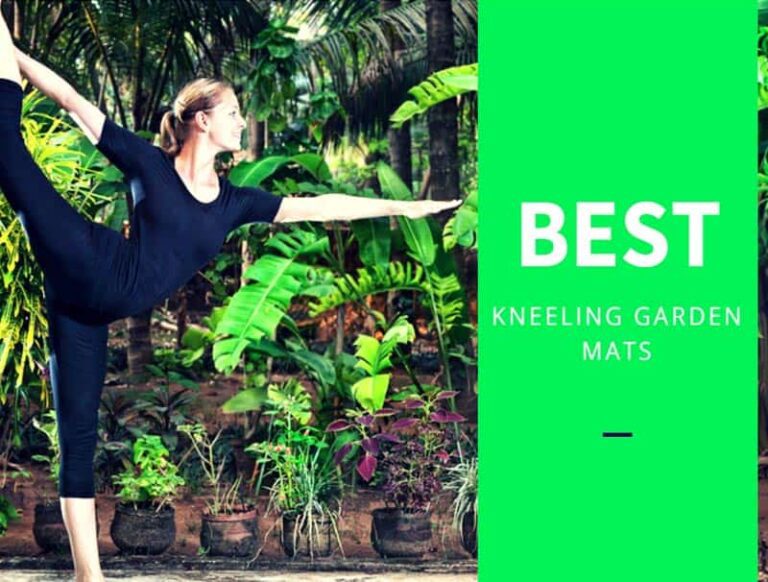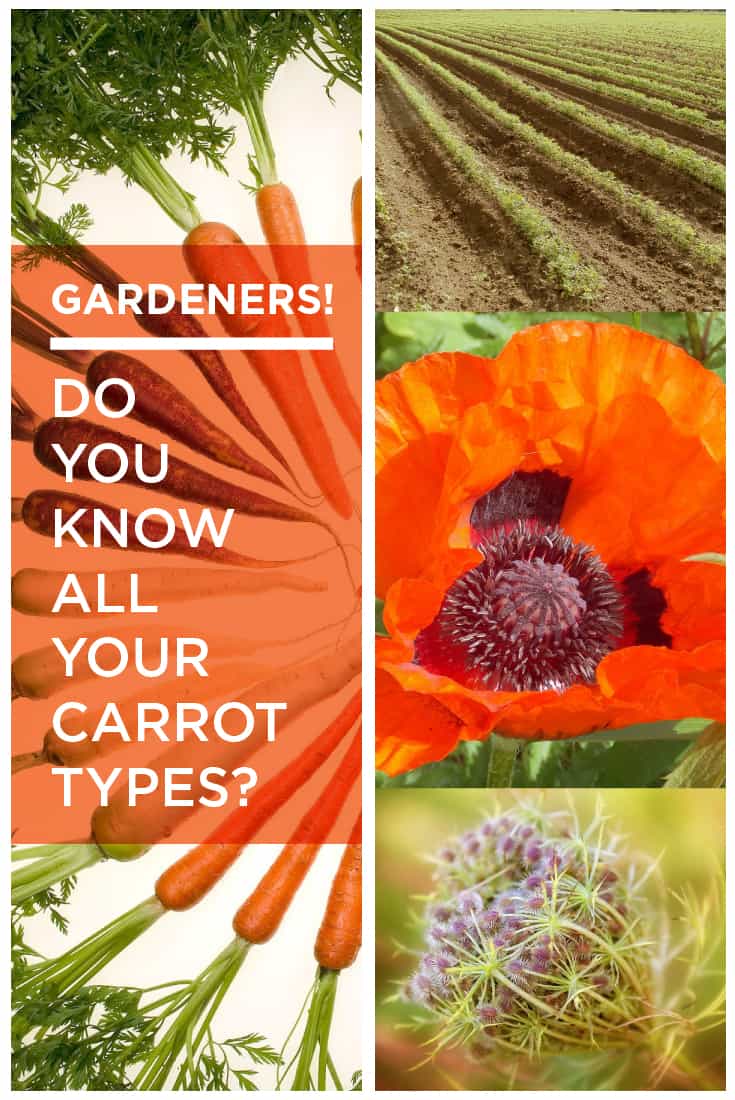40 Awesome Garden Edging Ideas To Enhance The Curb Appeal Of Your Property
More often than not the use of garden edging to highlight the development of the flower beds is able to give the impression of a harmonious articulation of your garden. If you’re one of those gardeners who prefer complex shapes, the use of natural supports that regulate the exuberant growth of the plants is a key element.
Garden edging is also important to delimitate the driveways or garden paths from the lawn. On the other hand, you could even use garden edging to highlight the different areas of your property. For instance, you can use garden edging to highlight the areas where you’ve placed a valuable plant. Or to create a relaxing oasis of peace in the middle of the lawn.
On the market, there are several garden edging solutions available. But choosing the right one for your property is a daunting task.
If you’re like me, you’d probably go for a massive garden edging solution made of natural elements such as river rocks or railway sleepers. Yet, these solutions are not for everyone. Maybe you have a minimalist garden where a hidden edging solution might be best.
Achieving balance within a well-groomed garden is perhaps the most valuable and the hardest goal to reach. A neglected garden will leave, in all cases, a sense of dissatisfaction to the observer. For this reason, I’ve put together this guide of 40 awesome garden edging ideas that will certainly help you enhance the curb appeal of your property. Enjoy!

Stone Garden Edging Ideas
Stones are natural elements that can enhance the look of all types of gardens. Whether you have a rustic environment or a stylish minimalist landscape, there are numerous stone garden edging ideas to use.
1. Flat Tiled Rocks Edging
Flat tiled rocks are ideal to use in a rustic or Japanese garden. In the first case, you can use the flat tiled rocks to delimit your flowerbeds, in the latter you can use them to highlight the transition zones between the various elements of your landscape.
Arranging flat tiled rocks is easy and fun. You could either arrange them in a single layer or stack them on top of each other for an uneven effect.
I also like using flat tiled rocks as edging for ponds or garden fountains. They look pretty much like river stones yet their reduced dimensions increase the versatility.
2. Crushed Rocks Around Your Patio
The patio is probably one of the most important elements of a garden. Besides representing a transition zone between the outdoors and your home, the patio can be used to arrange a cozy relaxing area or as an extension of your garden.
Sadly, what many homeowners neglect is the edging between the lawn and the patio.
Although not crucial to have one, a beautiful edge that marks the transition between the patio and the garden is always a good idea. The best way to create the edge is by using small crushed rocks. Create a border of a few inches between the patio and the lawn, then set up a second edge between the crushed rocks and the grass, such as a border of bricks or metal.
3. Gravel Stone Between Bricks
For a minimalist landscape, creating a garden edging with gravel stones and bricks might be the best idea. I usually use bricks to mark the end of the lawn or flowerbeds, the borders of the garden paths or driveways, and set gravel stones between them to create rest zones.
For instance, you could create a rest zone by placing a bench between the pathway and the lawn. Use bricks to create edges around both the pathway and the lawn then fill the space between the bricks with gravel stones.
Gravel stones can also enhance the curb appeal of your property if used in a Japanese garden.
4. Pebble Stones
Pebble stones are versatile. They can be used for multiple purposes, such as creating entire pathways or simply garden edgings.
On the other hand, you can use pebble stones on their own or in combination with gravel or large river stones to create stylish transitioning effects.
When used on their own, pebble stones are perfect to create an edging around a pond or around an area with lush vegetation, such as tall grass and bushes.
5. Large River Stones
Although large river stones match all landscaping contexts, I love using them in rustic environments. Most of the times I arrange the large river stones around flowerbeds, although they can also be used around ponds and even around the vegetable garden.
Another interesting way of using large river stones is around the plants placed between the walls of your home and the lawn.
6. Smooth Rocks And Bricks
Associating smooth rocks and bricks is a wonderful idea if you want to create a tidy yet not too manicured edge. You could bury the bricks in the ground almost completely to create the idea of a path stretching through the middle of your flowerbed, then arrange some middle-sized smooth rocks on one side of the bricks.
In this way, you can create two zones with different types of plants, or just leave a strip of lawn between the actual pathway and the flowerbed.
If you have a garden fountain or a pond, this type of edging could be a perfect match to draw attention on these beautiful elements.
7. Stone Transition Border
A graduated stone transition border is another way in which you could use various types of stones to create impressive edgings.
Most of the times, this type of edging is used to create a transition area between the driveways and the lawn, even if its use is more versatile than it seems.
There are no rules that set the thickness of such a transition border or the types of stones to use. I typically associate large ball-size rocks with gravel or finely crushed rocks, but you could use all sorts of rocks such as river rocks, pebbles, gravel, and even sand.
The only rule to follow is to arrange the rocks in strips. Place the smallest stones next to the driveway and finish the edging with the largest stones you use next to the flowerbed or vegetation area.
Wooden Garden Edging Ideas
Wood pairs well with modern landscapes, with less manicured environments and also with classical arrangements. It can be used to create edges between the pathways or vegetable garden beds. And since it is probably the most versatile type of edging, let’s see a few interesting wooden garden edging ideas.
8. Full-Size Railway Sleepers
Railway sleepers are my favorite type of garden edging. They are rustic yet stylish and literally match with any type of garden.
Full-size railway sleepers can be arranged in multiple ways to create delimitation areas between the various environments of your garden.
For instance, you can simply create a straight edging between the patio and the lawn. You can arrange them in zig-zag to create some flowerbeds between the fence and the lawn.
You could even place them in parallel in a stair pattern for a more original design. The options are truly endless and the limit is your imagination.
9. Vertical Railway Sleepers
Most homeowners believe that railway sleepers are only suitable for large gardens or lawns. The truth is that you can increase the curb appeal of your property with railway sleepers even if you have a small garden or only a tiny strip of land.
In this case, you should opt for vertical railway sleepers, namely pieces of railway sleepers of various dimensions. Simply arrange them in a vertical pattern around the flowerbeds.
If you want to create a flawless, stylish effect, choose sleepers of the same dimension. Alternatively, choose pieces of various heights for a more rustic environment.
10. Wooden Board Edging
Wooden board edgings are often seen as unstylish solutions used to create a barrier between the lawn and the vegetable garden. Nevertheless, wooden boards can enhance the look of your flowerbeds as well.
In a shabby chic garden, for example, you can use white wooden boards placed around flowerbeds, as a sort of a short fence.
11. Landscape Timber Edging
The best thing about landscape timber is that it comes in all shapes and sizes. Landscape timber edging can create a clear transition between the leisure area and the vegetable garden.
To create an edge between flowerbeds, my suggestion is to completely bury the timber in the ground and only leave the upper edge visible.
Enhance the edging by creating different patterns with pebbles or seashells for a more original effect.
12. Treated Wood

Treated wood can be used in the same way as the wooden boards. In most of the cases, I prefer using treated wood in the vegetable garden, usually creating a border of a few inches deep between the different vegetable rows.
In most of the cases, this type of edging prevents the spreading of weeds or pests and helps to grow healthy and strong veggies.
13. Cut Tree Trunks
Cut tree trunks are perfect if you want to create a countryside environment in your garden. Their use is also versatile.
You can use cut tree trunks to create a sort of a fence between the pathway and the lawn. You can also create a border between the areas with lush vegetation and the leisure zones.
14. Bamboo Garden Edging
Bamboo is a type of wood that pairs well with Zen gardens, Japanese gardens and also with modern landscapes. When it comes to garden edging, you can choose between young plants or cut bamboo trunks.
In the first case, I would suggest creating a sort of a river in which you can then plant your bamboo and create a natural fence between the various zones of a Zen garden.
In the second case, just use bamboo trunks to create edges of various heights either in a Japanese garden or in a stylish minimalist environment.
15. Logs Garden Edging
Just as the cut tree trunks, logs edgings match well with countryside or rustic environments. Thanks to their versatility, they can be used as edging around the flowerbeds or fences between the lawn and the pathways.
For a less common effect, cut the logs into pieces of different heights and use them either to create original edges between the flowerbeds or to create transition zones between the various rows of your vegetable garden.
Concrete Garden Edging Ideas
Concrete edges are probably the simplest to make. Either we’re talking about bricks or about poured concrete edging, there are many ways in which concrete can enhance the curb appeal of your property.
16. Poured Concrete Edging
Among all concrete garden edging ideas, the poured concrete edging is probably the best. As a landscaper, I always suggest my customers to use poured concrete edging if they want to create something unique and original.
The best part of this type of edging is that you will be able to shape the edge around your existing landscape elements without limits.
The downside? It’s probably more pricey than many other solutions and you will either have to ask a professional for the help or be really skilled in using concrete.
17. Crushed Concrete Edging
Similar to gravel or pebble stones, crushed concrete is a less expensive solution that guarantees a high visual impact.
You can either buy crushed concrete or ask a nearby development if they could give you any. To make original edgings, I suggest pairing it with other edging elements, such as wood or large stones.
If you simply want to make a smooth transition area between the flowerbeds and the lawn, install a hidden manufactured edge to keep the concrete in place.
18. Brick Edging
If railway sleepers are my favorite garden edging solution, bricks are, in my opinion, the second best. Just as the sleepers, bricks are versatile and suitable for a wide range of purposes and arrangements.
From creating subtle transitioning areas to clear, visible edgings between the flowerbeds and the lawn, there are numerous ways in which you could use bricks to enhance the curb appeal of your property.
Moreover, you can even use bricks of different colors or different dimensions to create patterns, pathways, and other decorative elements.
19. Cinder Blocks Edging
I also love cinder blocks edgings. In my opinion, they are just perfect to make edges for the flowerbeds and for a more original effect I usually use the holes of the blocks to grow small decorative plants, such as small perennials.
Since you can actually use cinder blocks as alternative flower pots, they are also great to create a clear transition between the vegetable garden and the leisure areas.
To do this, use the cinder blocks to create an edging between the veggie garden and the lawn, then use the spaces to plant small edibles and perennials in an alternate pattern.
Metal Garden Edging Ideas
Metal garden edgings are suitable either for classical, elegant landscapes or for modern and alternative designs. Here are a few metal garden edging ideas to inspire you.
20. Wrought Iron Edging
If you aim to create an elegant environment, with wrought iron you can’t go wrong. There are numerous wrought iron edging models you can choose from regarding both the shape and the colors.
In most cases, I would suggest choosing black edgings although vintage golden could also match certain designs.
To stay on the safe side, consider the overall design of your garden. If it is simple and classical, choose black. If you have various glam elements, vintage golden might be a more appropriate solution.
Wrought iron edging is also an inspired idea for a romantic, shabby chic design. In this case, choose white edging and use it around colorful flowerbeds. The best choices of plants are gerbera, hydrangea, and violets.
21. Rusted Metal Edging
Rusted metal edgings are perfect in modern, minimalist gardens. These metal panels are usually flexible enough to be modeled in any shape you like.
If you love straight lines, arrange the rusted metal edging in a zigzag pattern next to the fence or walls. For a wavy effect, model the edging in a curved pattern along the pathway.
You can also use rusted metal edging to create round edges around the flowerbeds.
22. Metal Pipes Edging
Metal pipes, either rusted or shiny, can enhance the curb appeal of your property, especially when used around the vegetable garden.
Most of the times, this type of edging matches perfectly with the nonconformist gardens yet they might not be the best choice if what you’re after is a perfectly manicured aspect.
23. Corrugated Steel Panels Edging
Corrugated steel panels are probably the best edging if you love minimalist designs and want to create an original edge around the raised beds.
Either we’re talking about raised flowerbeds or square foot garden, these steel panels will certainly enhance the beauty of your property.
24. Aluminum Gooseneck Pipes Edging
For a nonconformist design, aluminum gooseneck pipes edging represent a fun and original way of delimiting your spaces.
I would suggest installing the pipes around areas with lush vegetation, either small bushes or tall ornamental grasses.
Avoid this type of edging if you want to create a stylish or elegant effect.
Manufactured Garden Edging Ideas

Less creative but in many cases more practical, manufactured garden edgings usually have a clear purpose, keep your veggies away from weeds and pests. Nonetheless, you can use them for a multitude of purposes. Here are a few inspiring ideas.
25. Manufactured Concrete Edging
Manufactured concrete edging is a great alternative if you like the idea of a poured concrete edging but don’t have the skills or possibility to create one.
On the market, there are various solutions that range from elegant designs to minimalist lines. This type of edging is also fairly easy to install while the enhancing effect is guaranteed.
26. Gem Embedded Edging
Some manufacturers make concrete edging blocks embedded with colorful gems and glass stones. This type of garden edging is perfect if you aim to create an original garden.
You can use gem embedded edging in a shabby chic environment, in a nonconformist, colorful garden or even in an elegant yet unpretentious space.
The best ways to add value to your space with this type of edging is by using it either around a well-layered vegetable garden or around a pond or other source of water.
27. Cobblestone Flowerbed Border
Cobblestone or faux-cobblestone edging is easy to find on the market, fairly inexpensive and easy to install. If you care about the design more than the material, some manufacturers propose awesome faux-cobblestone edging made of resin or other plastic materials.
The main advantage of this edging is that it is easy to install, easy to maintain and really easy to replace if you want to redecorate your garden.
28. Lifetime Landscape Edging
Similar to the cobblestone edging, you can also find faux-wooden edging made of resin or plastic materials. Compared to the wooden edging, the lifetime landscape edging is easier to maintain and lasts longer than wood.
This edging is also easy to install regardless of the shape of your flowerbeds, thanks to its flexibility.
Although a great alternative for a low-budget garden redecoration, I still suggest using the real deal if you want to sell your property. Real wooden edging adds more value and enhance to curb appeal better than resin.
29. Easy-Flex No-Dig Edging
In some cases, the design of your garden might require the use of a subtle and almost invisible type of edging. This is the case in some types of Japanese gardens or when you want to maintain a flawless minimalist design.
Nevertheless, using garden edging around flowerbeds is still a must if you want to avoid the spreading of the weeds.
In this case, the Easy-Flex No-Dig edging might be the best solution. This edging usually remains hidden below the grass and it can be used for purposes that go well beyond gardening edging. For example, you can use the height of the edging as a guideline when you mow the lawn, or to install the perimeter wire if using a robotic lawn mower.
Creative Garden Edging Ideas
If you love arts and crafts, recycling and everything green, then you might also love these creative garden edging ideas.
30. Old Books Garden Edging
An unusual yet splendid garden edging can be achieved by using old books instead of bricks around your flowerbeds or pathways.
You can either use any old books you have or buy them from an antiquities shop. Some bookshops might also sell used or old books.
Although this solution is temporary, as books will degrade with time, the visual impact is guaranteed at least for a few months.
31. Seashell Edging
If you are living by the beach or gathered seashells in your last vacation, you can use them to create original garden edgings.
Around flowerbeds I recommend using larger seashells that can create a more clear borderline. If you have a lot of small shells, use them to create transition areas instead of gravel stones or crushed concrete.
The largest shells can even be used in the vegetable garden, not as edging but as signs with the names of the veggies you grow.
32. Recycled Shelves Garden Edging
Redecorating your house every now and then is rewarding. Yet, you’ll end up with some old furniture pieces that will probably reach the trash yard.
To make some use of your old furniture, recycle the shelves and transform them into garden edging. You can use them in the same way you’d use the treated wooden boards.
If your furniture was colored in different nuances and tonalities, an original design is absolutely guaranteed.
33. Pallets Edging
Old pallets are versatile. I already showed you how to make a pallet gardening table, yet they can also be used for edging purposes.
My suggestion is to use them as edging for the vegetable garden and the best way to do it is by cutting the pallets in halves and transform them into a sort of short fence.
The smallest boards can also be arranged in different patterns around the flowerbeds if the design of your garden doesn’t follow strict rules.
34. Woven Vines Edging
In a rustic environment, woven vines edging will certainly enhance the curb appeal of your property. Although beautiful to see, this type of edging is quite hard to achieve if you don’t have strong artistic skills.
If this is the case, you can opt for alternative ideas, such as woven garden hose edging that I’ll describe below.
35. Recycled Bicycle Wheels
If you love cycling you can make good use of the old bike wheels by transforming them into an original type of garden edging.
I have to admit that this is not my favorite type of edging, yet the idea is creative enough to be considered a genius.
In the same way, you can use collected hubcaps or even vehicle tires.
36. China Plates Edging
I love this idea especially if we’re talking about edging for the vegetable garden. You can find china plates at flea markets and they are usually really cheap to buy.
Depending on your preferences, you can use plates with similar patterns or plates of different colors and sizes.
Apart from the vegetable garden, this type of edging can also be used around a flowerbed if you have a rather small garden and the design is rather hippie and unpretentious.
37. Empty Bottles Edging
Every household gathers empty bottles. Yet, not every gardener knows that empty bottles can be used as an alternative gardening edging.
Again, I would suggest using this idea if you have a countryside yard and want to create an alternative design. The bottles can be arranged in numerous ways and if they are made of thick glass, you could even use the bottoms to make the pathways while the upper parts can be arranged around flowerbeds or other transition areas.
38. Terra Cotta Pots Edging
Many nurseries sell flowers in terra cotta pots and you will probably throw them away as soon as you’ll transfer the plants to the garden.
If you want to make better use of the investment, gather the pots and use them as original edging around flower or vegetable beds.
39. Woven Garden Hose Edging
I have already talked about the woven vines edging and promised you to talk about a less demanding solution.
Creating a woven garden hose edging is way easier than creating one made of vines, mainly because of the flexibility of the hose.
Although this edging might not be appropriate to use in all the spaces of your garden, it can still make a beautiful edging around the vegetable garden.
40. Gabion Wall Edging
With stones and wire cages you can create elegant gabion wall edgings. This type of edge is suitable to use in all environments and you can create different effects by using stones of different dimensions.
For a rougher design, use large river stones and don’t worry about the linearity of the wall. In a modern garden, use pebbles and try to create an edge as straight as possible.
In some cases, you can even use gravel, especially if you want to create transition zones in a terraced environment.
Final Thoughts
Hopefully, these awesome garden edging ideas inspired you. There are countless ways to create stylish or original garden edgings and the options are literally limited by your imagination.
If you have alternative ideas I didn’t mention in this article, feel free to share them by commenting below. We’d love to hear from you!





